When people think of air pollution, most immediately picture heavy smog drifting over cities and industrial plants.
This is the first and most evident form of air pollution, but it’s not the only one.
It’s important that we, as citizens of the world, fully understand the causes, effects, and solutions to air pollution.
This discussion is vital so that we can together make educated decisions about the best renewable energy source for the future.
We’ll cover 10 causes and effects of air pollution and then discuss 4 things we all can do starting today to help clear the air we breathe!
Air Pollution Definition
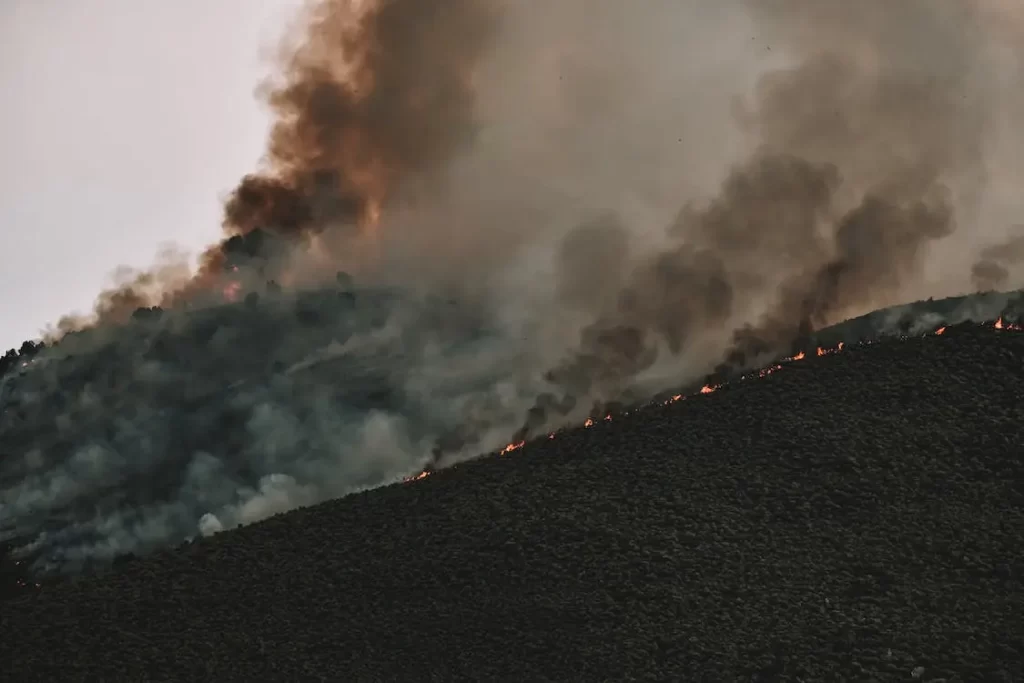
Let’s begin by defining air pollution. Air pollution is the contamination of indoor and outdoor air with anything that changes the natural air quality.
This definition can cover anything from indoor scented candles and household cleaners to vehicle exhaust, methane emissions from cattle, and dust caught in the jet stream.
Some air pollution can’t be helped. For instance, anything that decays releases carbon and methane into the air. Likewise, when the wind carries sand or wildfire smoke into the high atmosphere, we can’t help it.
There are dozens of causes of pollution, and the effects are catastrophic, but we’re going to narrow down our focus to human-caused sources of air pollution.
Our own trash, vehicle emissions, pollutive energy sources, and chemical pollutants. Let’s take a closer look.
Health Effects of Air Pollution
Substances that cause air pollution can linger and cause many adverse health effects for people, animals, and plants.
Pollution has been known to cause allergies, disease, damage to crops, and in extreme cases, even death.
In addition, air pollution creates an imbalance in the natural gases that make up our Earth’s atmosphere.
These imbalances slowly aid in the depletion of the ozone layer, an essential region of the stratosphere that soaks up most of the sun’s damaging ultraviolet (UV) rays.
These UV rays cause skin cancer, premature aging, eye damage, and cataracts.
In nature, excess UV rays decrease photosynthesis in some plants, and research shows that it could have a negative impact on biodiversity over time, especially in marine phytoplankton.
As the ozone depletes, the rate of global warming increases. Global warming is one of the worst environmental issues we face today. Pollution is a major cause of it, so we need to address this problem now.
Types of Air Pollution
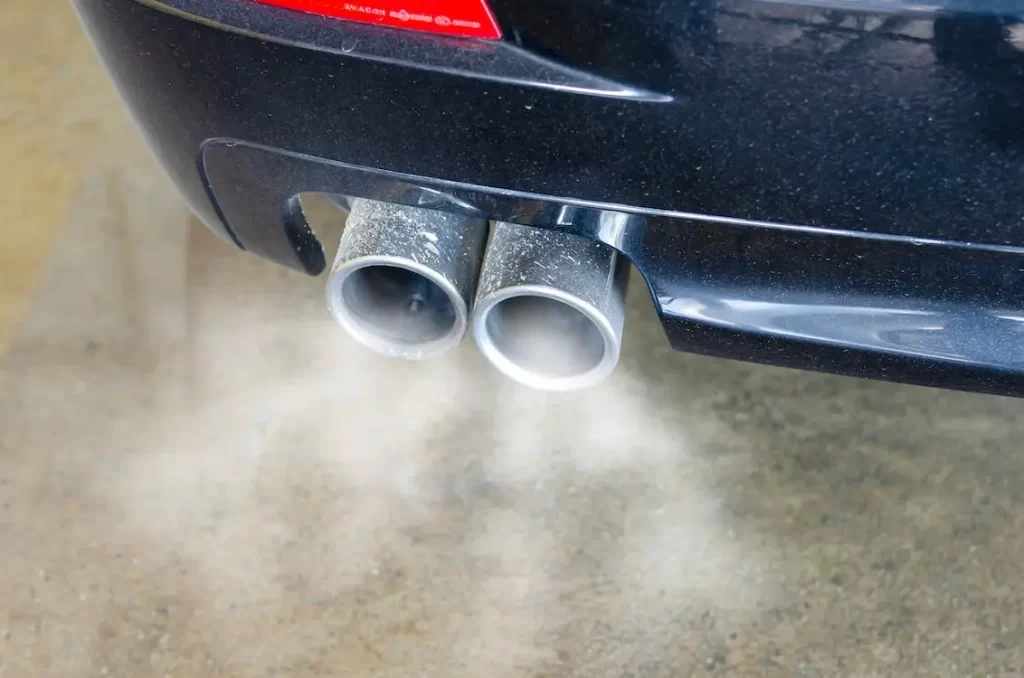
Before we get into the causes of air pollution, let’s take a quick step back and look at the different types of air pollution.
First, there’s invisible and visible air pollution. The smog you see lingering over a city is a good example of visible pollution.
- Invisible pollutants aren’t as noticeable, but they can be just as deadly, if not more so.
Examples of invisible pollutants include nitrogen oxides, sulfur dioxide, and carbon monoxide, to name a few.
You can’t see or smell carbon monoxide, but if you breathe enough of it you’ll fall asleep and never wake up. This is a deadly pollutant that you can’t detect like smoke or exhaust.
- Visible pollutants are easier to see. They look like a haze on the horizon or a big puff of black smoke coming from a truck.
The plumes of particulate from a wildfire or dust carried by the wind are visible pollutants.
They can cause major breathing problems for sensitive groups in small concentrations but can be hazardous to anyone when they’re thick enough.
When those pollutants are coal ash, fossil fuel fumes, or chemicals like chorine they’re toxic for everyone to breathe. They cause lung diseases and cancer.
Digging down even deeper, air pollution can be split into primary and secondary pollutants.
- Primary pollutants are things emitted directly into the air.
Car exhaust, factory and power plant emissions are primary pollutants.
- Secondary pollutants are the result of chemical reactions between primary pollutants that are released into the atmosphere.
An example of a secondary pollutant would be acid rain which forms when sulfur dioxide reacts with the water in the atmosphere.
Air Pollution Causes and Effects
| Air Pollution Causes | Air Pollution Effects |
| 1. Vehicle Exhaust | 1. Accelerated Global Warming |
| 2. Fossil Fuel Power Plants | 2. Human Respiratory and Heart Problems |
| 3. Industrial Exhaust | 3. Wildlife Endangerment |
| 4. Construction | 4. Acid Rain |
| 5. Agriculture | |
| 6. Natural Causes | |
| 7. Household Activities |
Air Pollution Causes
There are 7 major causes of air pollution. Let’s take a closer look at each one of these things that cause the air to become toxic.
1. Vehicle Exhaust
The number one source of air pollution in city environments is vehicle exhaust fumes, which contain high amounts of carbon monoxide.
It’s no surprise then that carbon monoxide also happens to be the largest air pollutant in the United States.
Millions of vehicles are operated on a daily basis in the US alone, each one leaving its own carbon footprint on the environment.
2. Fossil Fuel-Based Power Plants
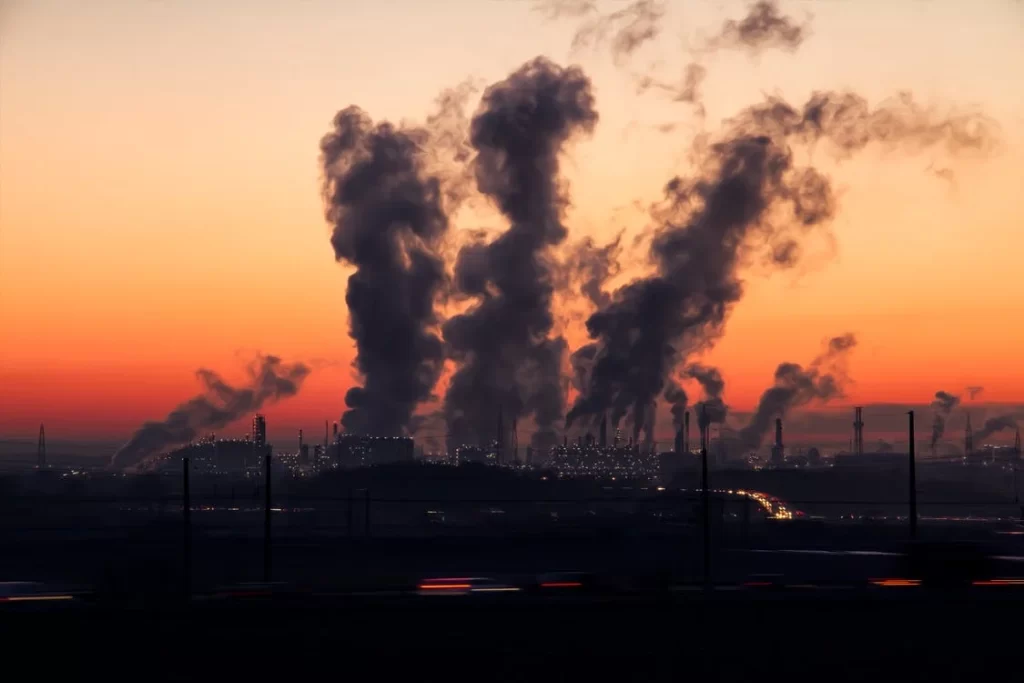
In addition to vehicle exhaust pollution, fossil fuels also present a wider scale problem when they’re burned for energy in power plants.
Chemicals like sulfur dioxide are released during the burning process, which travel straight into the atmosphere.
These types of pollutants react with water molecules to yield acid rain.
This is one of the reasons that alternatives to fossil fuels, such as nuclear, solar, and wind are some of the best technologies to develop for the future of our planet.
They release much fewer pollutants into the environment while producing equivalent amounts of energy.
3. Industrial Exhaust
Similar to the exhaust being released from vehicles, gas-powered heavy machinery located inside big factories and industrial plants also emit pollutants into the air.
Industrial plants are needed to manufacture the goods that we rely on for daily life. Current green energy solutions can’t provide enough consistent electricity to power these without fossil fuel.
One of the advantages of nuclear energy is that it can consistently provide the energy needed by industry without releasing greenhouse gases.
4. Construction Pollution
Dirt and dust are kicked up into the atmosphere from excavating and demolition-type construction activities.
Some more serious types of construction pollution involve the release of asbestos and lead into the atmosphere when demolishing old buildings.
The National Emissions Standard for Hazardous Air Pollutants stipulates that hazardous materials must be removed from buildings before demolition to help avoid large amounts of air and soil pollution.
When excavated areas are left uncovered it leads to environmental degradation as topsoil blows away on the wind or is washed away by the rain.
5. Agricultural Pollution
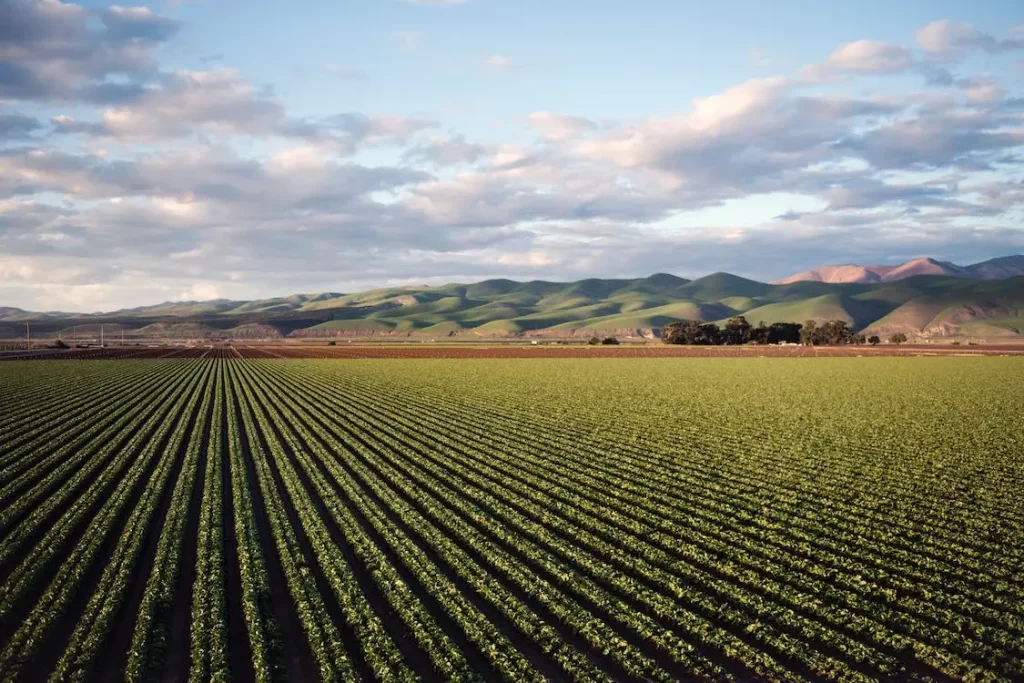
Switching the focus to agricultural activities, ammonia is a frequent byproduct that just so happens to be one of the most dangerous gases in our environment.
There are also plenty of nasty chemicals that get placed into the atmosphere from pesticides and fertilizers, which are being used at increasingly higher rates.
Nitrogen fertilizer is another agricultural contaminant that does pollute the air but more often is washed into the watershed where it causes algal overgrowth which results in “dead zones.”
These dead zones are areas where fish and crustaceans can no longer live. These dead zones are also responsible for heavy carbon and nitrogen release as excess plants decay.
6. Natural Causes
When people think of pollution, they almost always blame other people. Let’s not forget that the earth also contributes a lot of natural airborne pollutants.
Volcanoes, forest fires, and dust storms are nature-born events that dump massive amounts of air particulates into the environment.
These natural causes can be far more destructive to air quality than humans are, but they are compounded greatly by the pollutants that we add to the mix.
We can’t change what mother earth does to the air quality. We can change how much we add to it.
7. Household Activities

What about the pollution that takes place inside our own homes?
Common household chemicals, perfumes, detergents, and cooking fumes are the primary sources of indoor air pollution.
Homes without adequate ventilation often grow mold – a serious form of indoor air pollution that causes health effects like asthma and other respiratory system troubles.
Smoking tobacco and other drugs also release harmful pollutants and contaminants into the air that can cause cancer down the road.
Most of us focus on outdoor pollution as the problem, but our indoor air quality is often hazardous and we don’t realize it.
It’s vital to keep indoor air clean and well-ventilated for our health.
Air Pollution Effects
Now that we know the culprits of air pollution, let’s discuss the harmful effects.
We’ve already discussed some direct consequences of air pollution, but there are 4 in particular that we want to highlight.
1. Accelerated Global Warming
This is a green energy discussion, so let’s tackle this one first.
Earlier on, you learned about the ozone layer and its role in protecting our planet. Air pollution directly accelerates the rate at which global warming happens by depleting the ozone layer.
Global warming refers to the increased temperatures on earth.
Higher temperatures cause changes in migratory patterns of fish and ocean mammals and cause land animals to move further north to maintain comfortable habitats.
Depletion of the ozone layer also allows more UV rays to permeate the atmosphere which causes skin cancer, cataracts, and decreased plant biodiversity.
2. Human Respiratory and Heart Problems
Air pollution is known to cause irritation in the eyes, lungs, nose, and throat.
It creates respiratory problems and exacerbates existing conditions such as asthma and emphysema.
When continually exposed to air pollution, humans become at higher risk for cardiovascular disease.
Air filled with toxins can have a number of adverse effects on the arteries and has even been linked to heart attacks.
3. Wildlife Endangerment
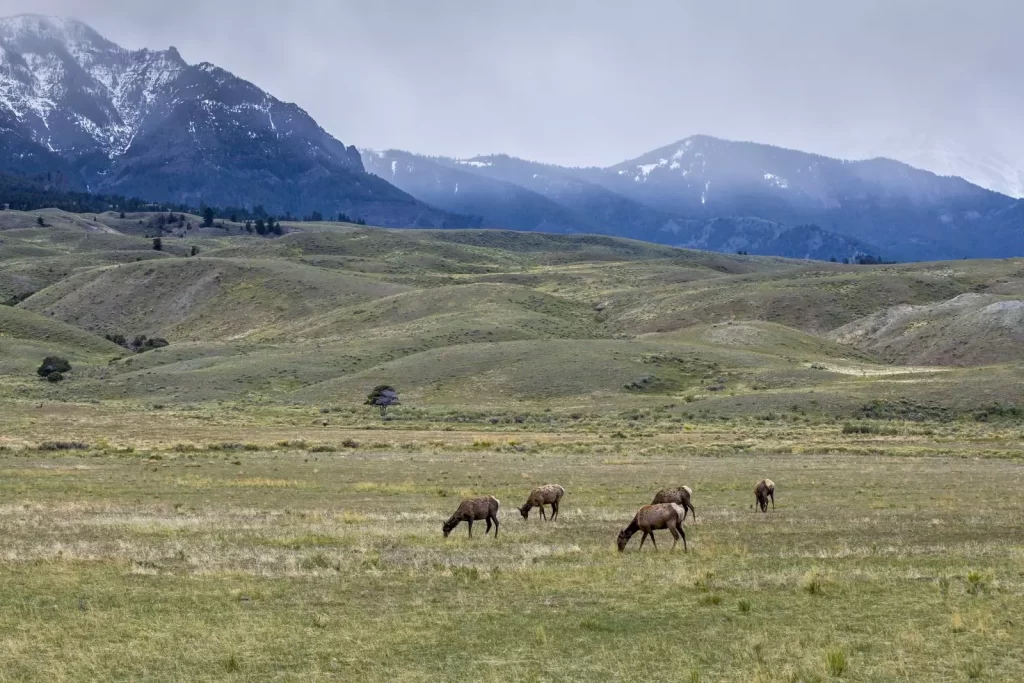
Most diseases and conditions that humans are susceptible to can affect animals as well. Air pollution is linked to animal birth defects, reduced reproduction rates, and habitat abandonment.
Heavily polluted areas force inhabitants to seek new homes, which can negatively impact the ecosystem.
Toxic chemicals also precipitate and land over surfaces of water which can lead to the endangerment of fish and marine mammals.
4. Acid Rain
When air pollution, specifically sulfur oxides and nitrogen oxides, are released into the sky through fossil fuel burning.
When these oxides react to the water in the air it creates acid rain. It looks like regular rain, but it’s much more acidic than pure rain.
- Acid rain leaches aluminum from soil into waterways. The high levels of aluminum damage habitats for plants and aquatic life.
- Acid rain changes the pH levels in soil and water making some species unable to thrive, and leaving them vulnerable to extinction.
- Acid rain removes the nutrients that trees need to grow and thrive. This leaves large swaths of dead and dying timber that are vulnerable to freezing and forest fires.
Acid rain has been known to cause harm to humans and animals alike, and even damage crops.
4 Air Pollution Solutions for Real Life
It’s one thing to understand the causes of air pollution and air pollution effects, but we need some air pollution solutions that we can implement starting today.
Let’s dig a little deeper into real life solutions for preventing and minimizing air pollution.
1. Minimize the Use of Fossil Fuel

As a leading contributor to air pollution, it only makes sense that a vehicle-based solution appears first on this list.
If you can afford to buy an EV car, that’s a great option as long as you’re getting the electricity to charge your car from a clean energy source.
Many EVs are powered by a grid that’s burning coal and oil to generate electricity. This isn’t helpful at all. The switch only works if your community is using clean energy.
Here are a few more real-life ways to help eliminate your transportation carbon footprint:
- If you can get there safely by walking, then go on foot as often as possible.
- If you can get there safely on a bicycle, that’s a perfectly green option.
- Use public transportation as often as possible. Many buses run on clean-burning natural gas, and quite a few new hybrid and electric buses are rolling out.
- Carpool with family and friends. If you can get 4 or 5 people to their destinations in one car instead of 4, that’s a lot of carbon saved from the atmosphere.
It takes planning ahead to use public transportation and carpooling because these tend to be slower than just driving where you need to go.
However, when you use ride-sharing and public transportation you can rest easy knowing that you’re doing your part to clear the air.
2. Decrease Energy Consumption
When you’re leaving home, be sure to turn off the lights, TV, and any other electronic appliances.
Fossil fuel plants are a major cause of air pollutants, and the less energy you need, the less we have to rely on those plants to generate electricity.
If you’re charging your EV car on fossil fuel, you should consider investing in a solar charger instead so you know you’re actually doing your part to clean up the environment.
Here are a few more changes you can make to help use as little fossil fuel electricity as possible.
- Install solar tubes in your home. Tubular skylights pros and cons can be hotly debated, but the fact is they let you turn off the lights while the sun is up while enjoying bright, ambient, natural light.
- Choose solar as often as you can. Micro-applications of solar power are incredible. You can get solar flood lights, solar Christmas lights, solar generators, and more! Everything you can convert to solar decreases your dependence on fossil fuel electricity!
- Use LED light bulbs. LED light bulbs are the most efficient bulbs we have, and the price has dropped so dramatically that we use them in everything.
- Turn off the lights. Don’t use every light in the house, and be sure to turn them off when you leave the room. Consider adjusting your sleeping schedule so that you don’t have to use electric light as late into the night.
- Unplug your chargers. Did you know that chargers use electricity even when you’re not charging a device? It’s not a lot, but when we all have unused chargers plugged in it adds up to a lot.
- Keep appliances clean. You can keep your appliances running efficiently by keeping them clean. Clean refrigerator vents and coils and dryer vents so they’re not using extra electricity to run.
- Air dry your clothes. Even if you have a gas dryer it uses electricity to tumble clothes. Air drying your clothes will help them to last longer and use a ton less electricity.
- Turn the thermostat down (or up). Adjust the thermostat according to the weather. Let the house get a little colder in the winter and a little warmer in the summer. You’ll save a ton of energy.
There are so many things that each of us can do to help decrease our own dependence on fossil fuel electricity.
Even areas served by cleaner sources of electricity like nuclear power and hydroelectric power can conserve so the power company doesn’t have to supplement with fossil fuel electricity.
Read More: Medical Use of Nuclear Energy. Discover how nuclear energy is used in the field of medicine.
3. Become an Advocate for Clean Energy

Every day, technology continues to advance that improves the efficiency and cost of clean energy such as solar, wind, and geothermal.
The advantages of geothermal energy, solar, and wind are that they create much less air pollution. In the case of geothermal energy, greenhouse gas emissions are minimal to zero, depending on the type of plant.
Even nuclear is leaps and bounds better than traditional fossil fuel plants when it comes to air pollution.
Even promoting the installation of a single windmill can help relieve the burden on a fossil fuel power plant, reducing local emissions.
It’s often the case that the public will support clean air measures but they aren’t up on the latest green technology news or aware of how their habits affect the environment.
Kindly and winsomely educating your own community can be a great place to start. Shouting and anger will turn people against your point of view. Keep your position positive.
You may be surprised at how many people are excited to join you on your mission to clear the air.
4. Promote Recycling Programs
Recycling is facing a big hurdle in the United States as communities wrestle with the rising costs and the increasing difficulty of recycling.
Recycling is one of our more difficult environmental problems and solutions. It’s a problem because the United States recycling export market has dried up leaving us with loads of unprocessed recycling.
Communities are now paying to have their recycling hauled away instead of selling it, making it a financial burden that many communities can’t afford.
Recycling is also a solution because throwing away single-use plastics, aluminum, paper, and other materials is a major contributor to greenhouse gas emissions.
We have to develop robust domestic recycling plants that can turn our national waste streams into materials that we can reuse.
You can help by educating your community on how to recycle without contaminating the recycling stream so that materials don’t have to be discarded in the landfill.
Air Pollution Examples
Air pollution is any particulate that enters the atmosphere that changes the natural constituency of the air.
Here are a few examples of air pollution.
- Carbon monoxide
- Carbon dioxide (in excess)
- Lead
- Nitrogen oxides
- Particulates (like smoke and dust)
- Creosote
- Petroleum hydrocarbons
These are released through fossil fuel exhaust, garbage decay, solid waste decay, forest fires, dust storms, and more.
Final Thoughts
We have discussed the common causes, effects, and solutions for dealing with air pollution.
With air pollutants being such a widespread problem, it’s imperative that we come together to become part of the solution instead of blaming the problem on everyone else.
Air pollution can have some devastating impacts on our bodies and the planet if left unsolved.
What are your thoughts on air pollution? Do you have more ideas on how we can help to reduce local air pollution levels? Let us know in the comments below!
